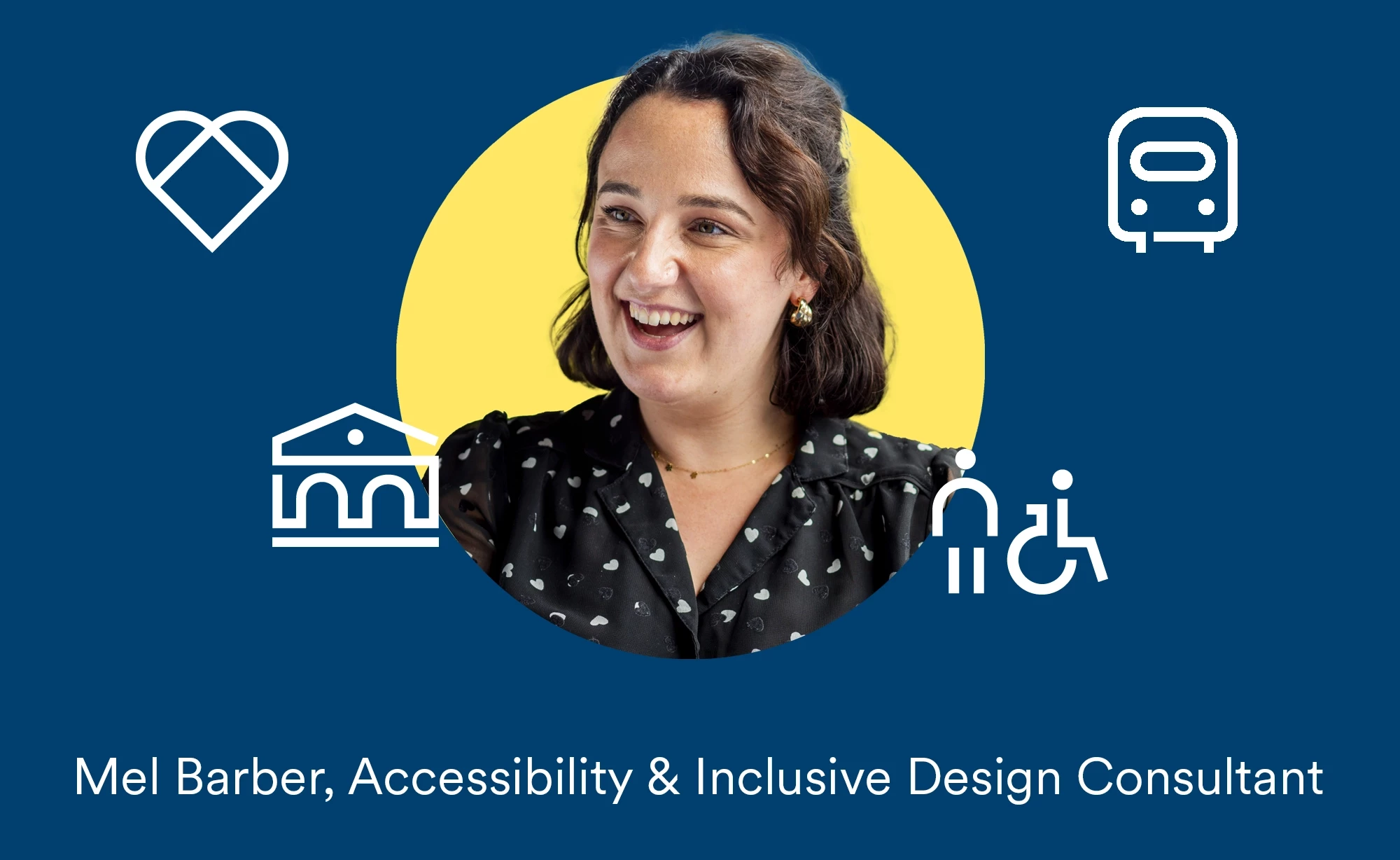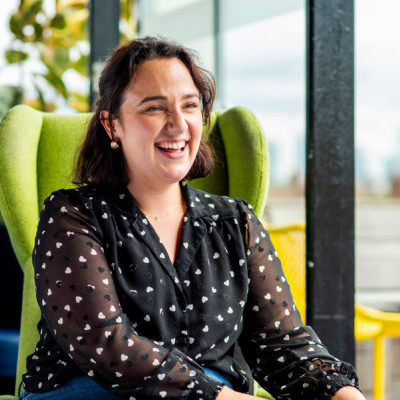Mima Moments - Mel Barber, Accessibility and Inclusive Design Consultant
In the next edition of Mima Moments, we catch up with Mel Barber, Accessibility and Inclusive Design Consultant, as she shares how her lived experience has inspired her career, what's inspiring her in inclusive design, and the one change she would encourage every designer to make.

What inspired you to pursue a career in design?
I was inspired to pursue a career in design through my lived experience. I started my career campaigning for equal access in the live events and music industry. I was a music fan going to lots of different gigs, but going to places and spaces that weren’t built for me, and what my access requirements were. So I got involved and found that I could become an access consultant through the campaigning side and work within the charity sector.
I really wanted to be a part of having a voice in changing the built environment and making it more accessible and inclusive. Not just for my own reasons but for everyone, so that future generations don't experience the barriers that I have to experience.
What does inclusive design mean to you personally?
For me, this links to the first question. It is about making places and spaces more accessible and inclusive for everyone. There are different terminologies around inclusive design - people call it inclusive design, inclusive environment. But I think there is a central goal to all those different terms and principles and that it is literally just about making places and spaces and experiences more inclusive for everyone. Not just for disabled people, but focusing on anyone who has any sort of protected characteristic or requirements to interact with the world.
What’s an example of inclusive design in the world that currently inspires you?
Recently I have come across lots of inclusive or accessible products through working with colleagues at Mima, or staying in touch with new developments and technologies in the industry. Something I particularly enjoy is makeup and beauty trends I see on social media. I have seen different beauty products that are designed to be more accessible or inclusive. Packaging that has been designed in a certain way, maybe to help someone with limited dexterity, for example. That is something that I haven’t seen before and is a new development, away from the built environment. But it's something that quite a few people interact with on a daily basis. Seeing that more companies and organisations are making more inclusive products is great, and something that I would love to be more involved in and champion.
Interact with people who have different lived experiences to your own. Ask questions and be really inquisitive, and don't be afraid, you're not going to offend anyone.
What’s a small change every designer could make today to be more inclusive/user centred?
I would say try to think outside of their own experience. Interact with people who have different lived experiences to your own. Ask questions and be really inquisitive, and don't be afraid, you're not going to offend anyone.
People appreciate being recognised and valued as experts in their own lived experience. If I was going to say one thing to a designer it would be to interact with different people who have different experiences. Utilise peoples expertise, pay them for their time and knowledge. That would be my number one tip.
Finally, what does the micro and macro mean to you?
The micro and macro concept of Mima really resonates with me. I think inclusive design and accessibility is, just as I was talking about with my own lived experience, focused on how you interact with the world, as a human, as a person. But inclusive design is also about looking at the world from a wider perspective.
It really resonates with me as a consultant because I look at my own experiences and how I interact with the world, and what barriers I might want to bring down or eliminate. But what makes me a better consultant is looking at the wider perspective and interacting with people with different lived experiences, and different access requirements than my own.
And I find that I learn so much from that, and it makes me a better consultant because it's not just focused on what I know, but constantly learning from the wider perspective, the macro perspective.
Written by:

Mel Barber
Accessibility and Inclusive Design Consultant
Mel delivers technical, holistic design solutions within the built environment, with recent experience on Oxfordshire Community Rail (Station Based Calm Spaces) and Gatwick Airport. Mel provides realistic accessibility recommendations, balancing client aspirations with user experience. She works collaboratively to enhance creative outcomes through inclusive, project-specific thinking.